If you’re looking to get your homebrewing setup out of the kitchen, the first thing you’ll need is a propane burner. These handy BTU throwers produce plenty of heat; enough to bring 5-10 gallons of wort to a boil in no time.
How Propane Burners work
Propane burners work by transferring a regulated amount of propane to a burner head. During this process the propane is lowered to atmospheric pressure, where it can mix with air and ignite. This mixing occurs at the round widget where your propane tank hooks up to the burner. The round plate can be rotated to increase or decrease the amount of air being mixed with the propane, but leaving the setting at the 50/50 mark is a safe bet if you don’t want to mess with it.
The most incredible thing about this entire process is that propane burners work without using any electricity. Instead, they use the Venturi Effect to lower the inline pressure of the propane below atmospheric pressure, causing air to be sucked in through these inlets.
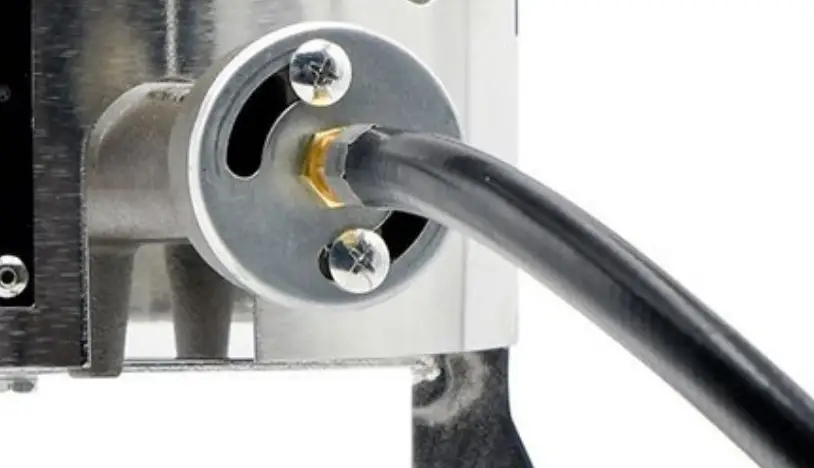
Setting Up & Using Your Propane Burner
At first glance, using your propane burner for the first time can seem intimidating. A canister of explosive gas and a powerful open flame that resembles the sound of a jet engine can seem like a recipe for disaster. However, setting up and using your propane burner is actually incredibly easy.
- Place your burner and propane tank where you want them to be during the brewing process.
- Attach the propane burner’s hose to the tank and turn the hose’s regulator all the way to the closed position. At this time, add your kettle with wort or mashing water to the top of your burner.
- Open the valve on the propane tank all the way to the open position.
- Next, with a lit long lighter by the burner head, slowly open the regulator on the hose until the burner lights. Now you can continue to open the hose regulator until you have max power.
TIP: You can close the regulator on the hose most of the way once the wort begins to boil. You need much less propane to maintain a boil than to bring the wort to a boil. This also helps reduce the risk of boil overs.
Benefits of Brewing with Propane Burners
There are a few key benefits to upgrading to a propane burner setup compared to brewing on a stovetop.
Size
The first benefit is batch size. While some kitchen stoves can bring 4-5 gallons of wort to a boil, it usually takes a while, and the boils aren’t particularly vigorous. Having a propane burner speeds up the brewing process and unlocks the ability to do full volume boils (batches with volumes that account for boil off prior to beginning the boil).
Time
The second benefit is your time. It takes just as much, time, effort, and cleaning to brew 3 gallons of beer compared to 5 or 10 gallons of beer. Having a good propane burner for homebrewing allows you to maximize the beer you get for your time. Here are some of the best propane burners on the market.
Best Propane Burners for Homebrew Kettles
Dark Star® Burner 2.0
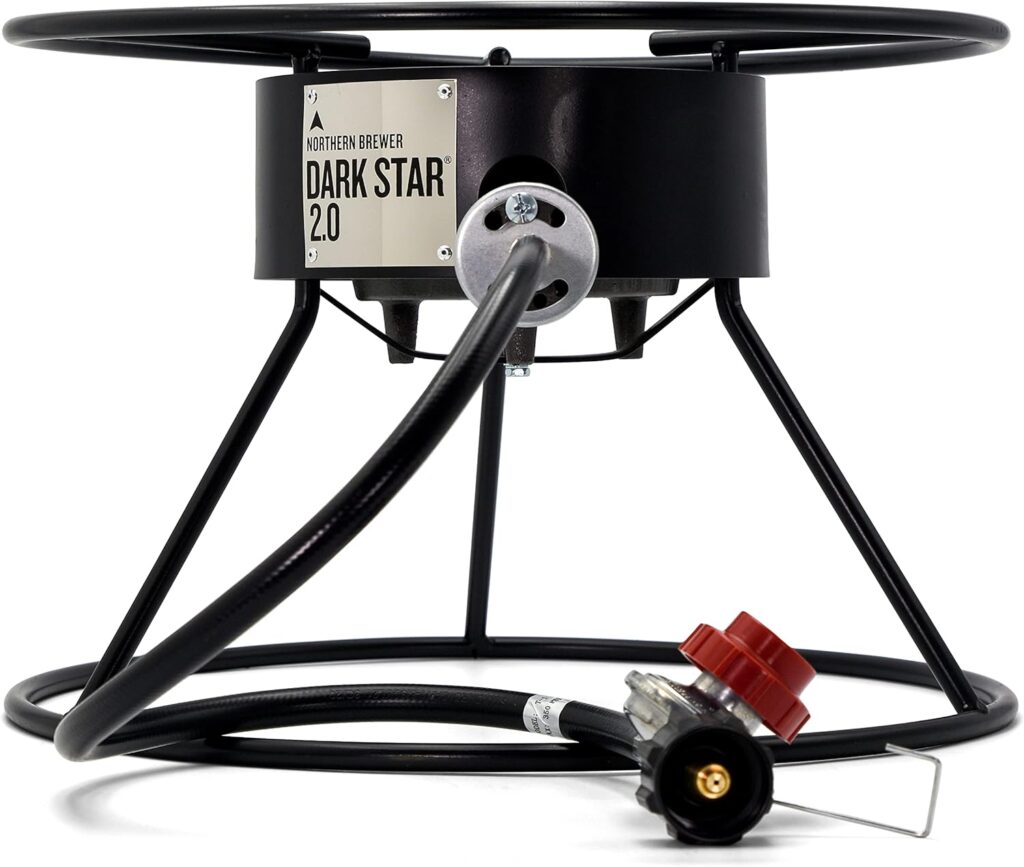
If you’re just now thinking about brewing outdoors and are looking for an affordable, yet efficient option, the Dark Star 2.0 propane burner is probably going to be your ticket. The 2.0 model is an improvement on the company’s original Dark Star burner. The previous model had an output of 54,000 BTUs, but the 2.0 has an improved 65,000 BTU rating which gives you the power to boil up to 15 gallons in good conditions. The Dark Star 2.0 has a wind guard to help preserve efficiency, however, if you plan to push your system to larger 12-15 gallon boils, you may want to consider more powerful options.
Bayou Classic KAB4 High-Pressure Banjo Cooker
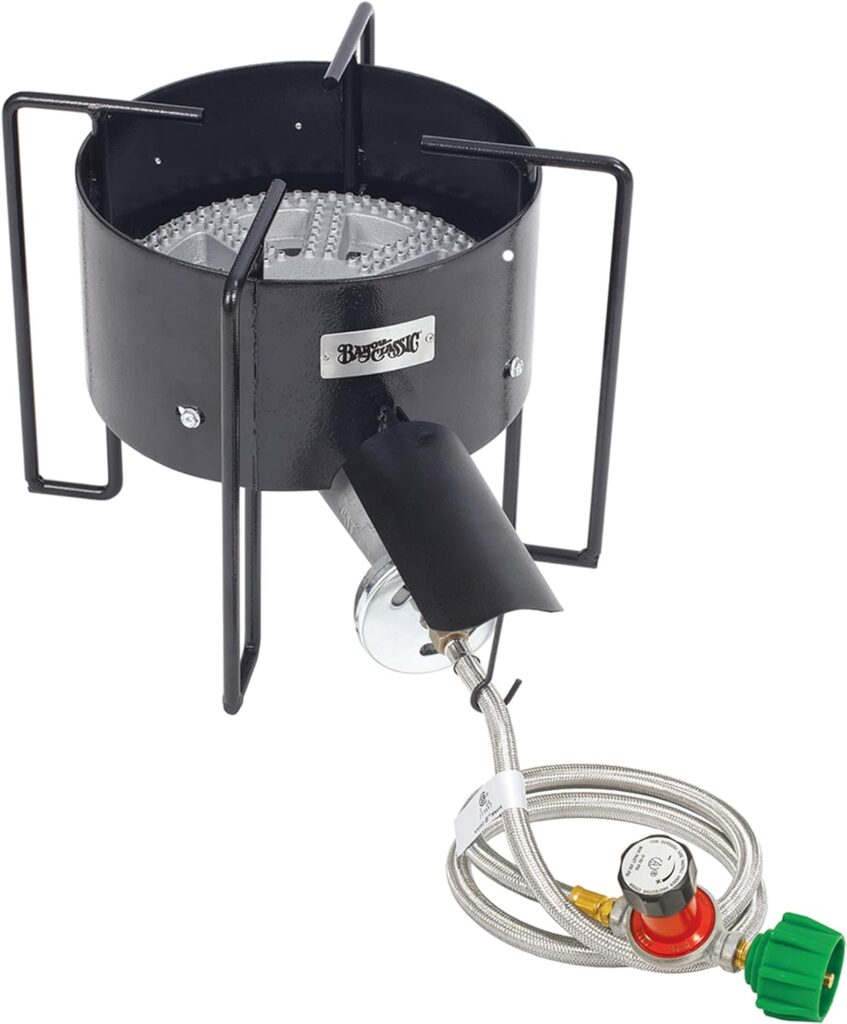
The Bayou Classic KAB4 High Pressure Banjo Cooker is another terrific propane burner option for homebrewers. It has a sturdy frame and a larger windshield than the Dark Star 2.0. The manufacturer lists the boiling capacity at 100 quarts, or 25 gallons. The hose length is four feet, which is slightly above average for economically-priced burners.
Bayou Classic SS10 Stainless Steel High-Pressure Cooker
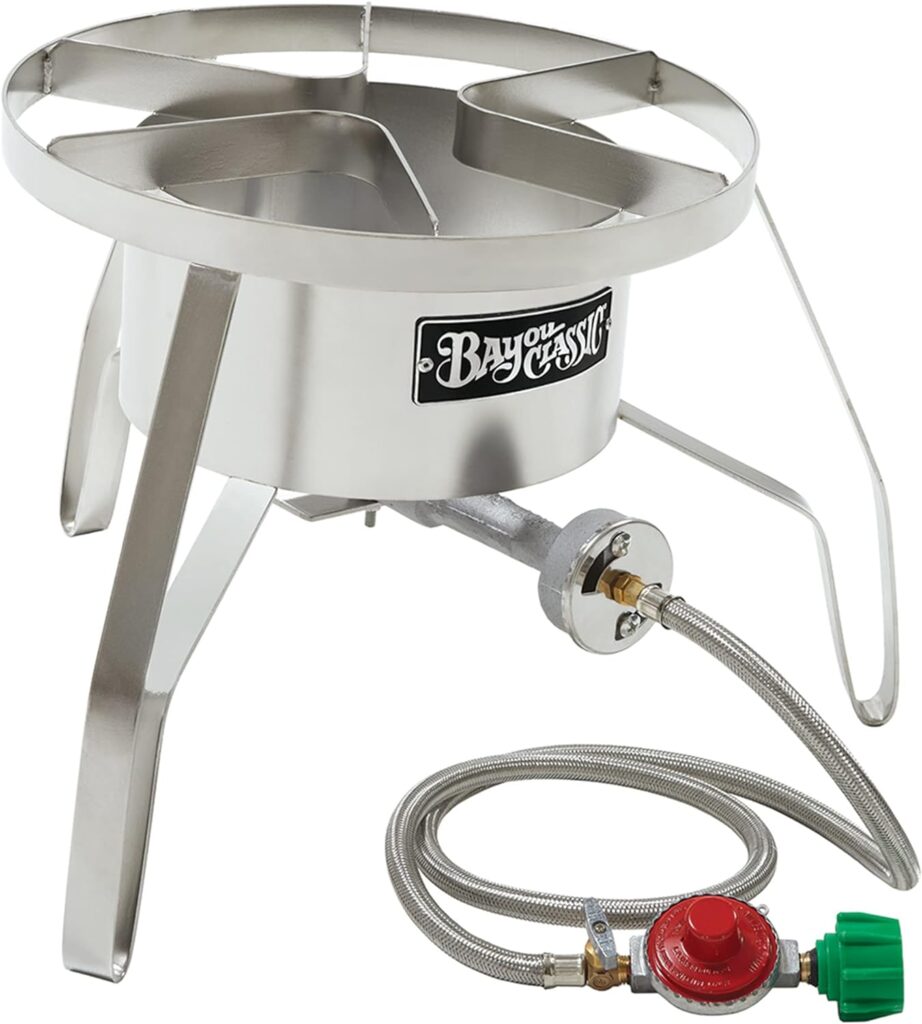
The Bayou Classic SS10 is a stainless steel propane burner built for turkey frying and homebrewing. While it earns style points for the shiny appearance, it isn’t anymore powerful than other stock Bayou Burner options. For homebrewers, this system tops out in the range of 5-10 gallons as far as batch size is concerned. However, if you’re building a brew stand and want that stainless look throughout your setup, the Bayou Classic SS10 should be one of your top considerations.
Blichmann Hellfire Burner
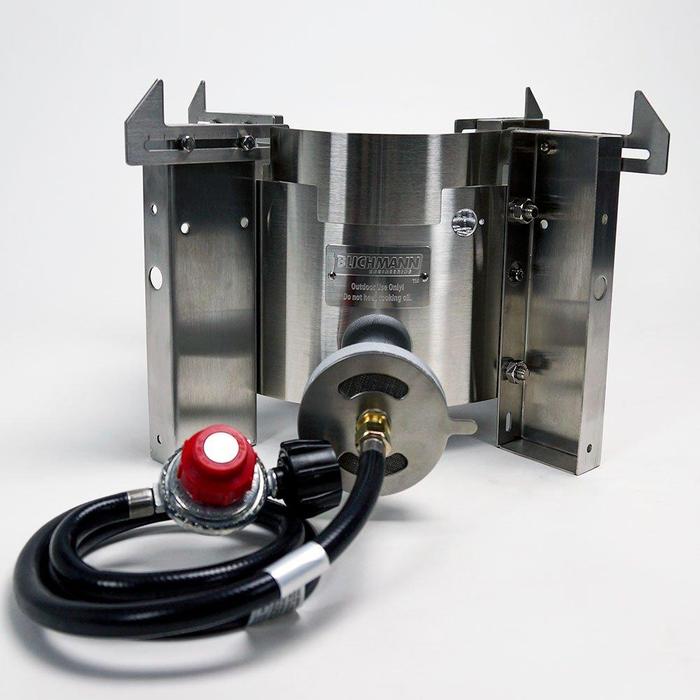
Blichmann produces the Hellfire Burner, and it was the first propane burner designed specifically for homebrewing. As such, it has gained incredible respect in the brewing community and the Blichmann name represents some of the best brewing equipment on the market.
The Hellfire Burner has two different settings. One for regular use and another for high-powered heating. The regular mode has an 80,000 BTU rating while the high-power mode sits at 140,000 BTUs. This burner can easily handle 20 gallon batches.
Blichmann has a few modifications you may consider as well. If you opt for the floor burner model, you can add leg extensions to increase the height of your burner. The Hellfire Burner is also available in a stand mountable version.
Eelmetall Bru Burner
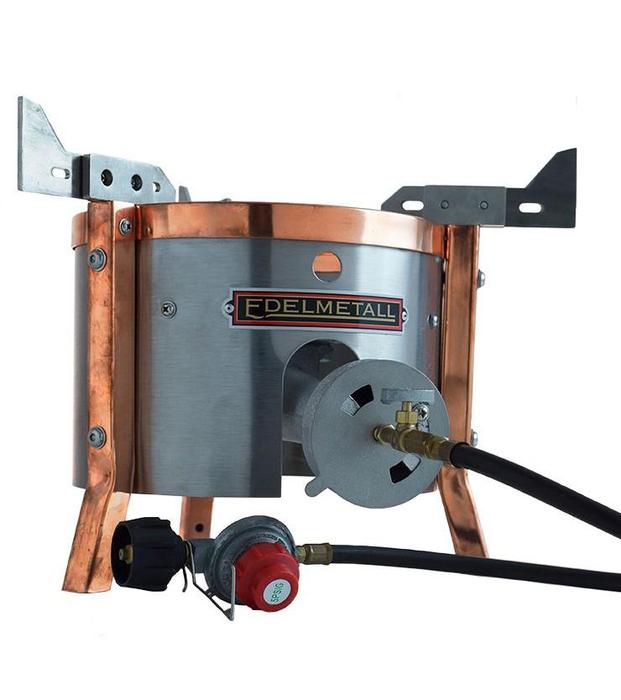
This is another propane burner designed specifically for homebrewers. It has an output of 72,000 BTUs. One of the most attractive features about the Edelmetall Bru Burner is the exterior appearance. It includes a steel and copper look that is a must-have for anyone looking to create an aesthetically pleasing brew setup. The sturdy support can support 30 gallons. The tall windscreen helps maintain the burner’s efficiency. Similar to the Hellfire Burner, you can purchase leg extensions to raise the total height of the burner.
GAS ONE Propane Burner Two Tier 300,000-BTU High-Pressure Propane Double Burner
If you’re looking to create a gravity fed setup, this is the burner set for you. This brewstand kit has all you need to setup two powerful burners at different levels so you can use gravity to transfer strike and sparge water into a mash tun or brewing kettle.
One burner has an output of 100,000 while the other puts out a whopping 200,000. Overkill? We don’t think so. The stand has 2 wheels and a sturdy frame so the system is easy to move and store between brew days.
The type of propane burner you need for homebrewing will rely heavily on how big you need your batches to be, your personal style preference, and if you plan on increasing your batch size in the future. If you see yourself brewing larger batches in the future, you’ll definitely want to opt for one of the more powerful burners on this list.

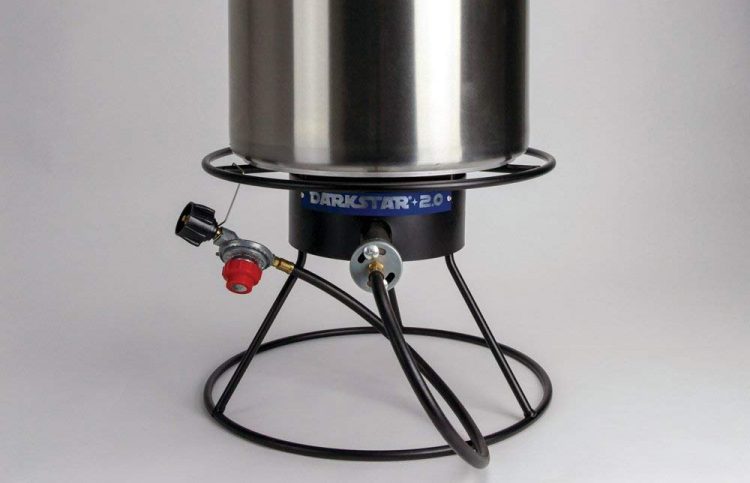
One Comment
gasNtools
I have an idea of purchasing propane burners for indoor. This post was very useful to know the details of propane burners.